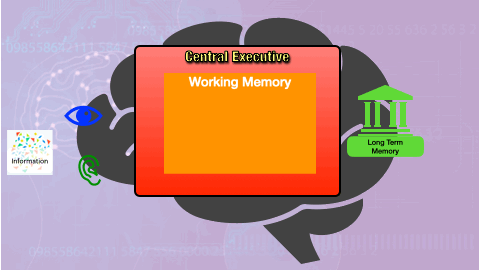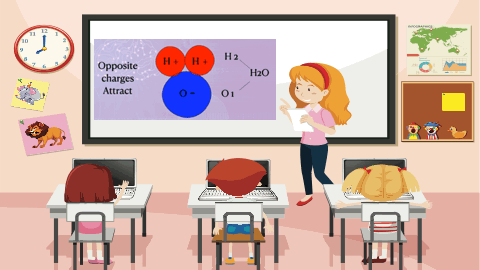
Reflections on Theory and Practice
In Pursuit of Understanding and Practices That Drive the Greatest Impact in Education
Elaborative Strategies
The big idea here is, teaching and using specific elaboration strategies can have powerful positive benefits for learning.
What Is Elaboration?
A simple definition of elaboration is, "the connection or addition of information".
Why Is It Important?
Elaboration is not a new concept to almost anyone. But often it can be referred to in a whimsical or undefined way in education.
Teacher: "You need to elaborate on this process".
While the basic definition of the world is very simple, its true impact on learning can be very powerful, and methods on how to elaborate effectively can be elusive or unknown to many learners.


Elaboration is powerful because it forces learners to focus more closely on a topic or concept paying more attention to and using more of its fundamental pieces or aspects. This has several powerful benefits:
-
Creates another opportunity for spaced retrieval.
-
Focusing more closely on a topic or on more of its fundamental parts creates more opportunities for making connections to previously established knowledge.
-
These connections can be more deliberate and therefore stronger.
-
Focusing on more basic or general aspects of an idea encourages abstraction.
-
By making connections to more basic established knowledge learners are able to relieve pressure on their working memory.
Elaboration Strategies
The following are some elaboration strategies that have discussed in the cognitive science and memory literature and reported to help the recall of information.
Summarizing
Summarizing is something that is used quite often in classrooms. Here I will focus on some suggestions on how to make it a more powerful elaboration activity.
-
First, have students to verbally share their summaries with others. They can read from their notes but encourage them to try to summarize without them.
-
Forces them to retrieve the information and use it.
-
Shatters any illusions of knowledge they may have.
-
The act of verbally summarizing activates the Phonological loop and the visuospatial sketchpad.
-
-
Second, have the students go back and add or revise information from their summary. This should be an expectation not optional.
-
Forces them to focus more closely on the details of what they have summarized.
-
It becomes a metacognitive exercise. The act of thinking about their thinking.
-
Creates a desirable difficulty. Pushing them to do something that is a bit hard but not overly difficult.
-
Practices good work habits.
-
These outcomes of this practice also need to be explicitly taught to students, so they can think about and internalize the reasons and benefits of doing the activity.

Drawing An Idea
Drawing or sketching an idea is another activity that is commonly used in classrooms. This is an elaboration activity because it requires the learner to focus on fundamental details or add details they may have disregarded before. Things like color, shape, texture, size, perspective, etc. Again, I will focus on some suggestions on how to make it a more powerful elaboration activity.

-
Push to include important words or phrases that connect to the picture.
-
This adds the phonological loop and the visuospatial sketchpad combination to the connection process.
-
In general, no more than a few words or a short phrase.
-
-
Explicitly teach how the quality of the drawing is important.
-
This does NOT mean the student needs to be good at drawing, but more effort means more attention to detail, which means increased opportunities to learn.
-
Someone who is not as good an artist will still learn more when they put effort into their drawing, compared to someone who is an amazing artist but didn't try.
-


-
Educators should take an active role in this process by providing examples, scaffolding how it MIGHT be drawn, giving expectations for what should be in the drawing.
-
Too often we leave this to the student's "creativity". But this only serves a small portion of our students. Many students don't have the background knowledge or skills to do a good job.
-
When it is framed as suggestions, student will still feel like it is their own work when they are done, even if they copied what the teacher did. This creates a sense of pride, confidence, appreciation, which all lead to better learning.
-
Elaborative Interrogation
(Asking Questions)
This activity specifically refers to specific "What if", "How", and "Why" questions. These questions push students deeper into the topic rather than just looking for a simple answer.

-
Elaborative Interrogation requires some thoughtful intent before using.
-
This method is good for students who already have a lot of background knowledge in a topic, or who are intrinsically motivated.
-
For struggling students or students who are new to a topic, this is better used as a scaffolded activity lead by the teacher.
-


Mnemoics
Mnemonics have gotten a bad wrap in some education circles. This is a great elaboration activity when used correctly. Here are some suggestions on how to use this as a good elaboration activiy.
-
Encourage wild and crazy connections.
-
The more wild and crazy the more powerful the encoding.
-
-
Combine drawing with this activity.
-
Double up on the elaborative properties.
-
-
Encourage students to add the connective elements to their drawing.
-
Ex. PEMDAS: Encourage them to put the math symbols PEMDAS represents somewhere in their drawing.
-

Method of Loci
In this strategy, you ask students to think about a topic, concept, or process closely. Break it into important or fundamental parts. The students then take these parts they want to learn and place them along a path in a space that is well known to them.
Example
-
Learning about the solar system. Use Method of Loci to learn the planets.
-
Students pick a room in their house they know well. (living room for example).
-
Then they mentally place the planets along a path through their living room.
-


-
Have students actively make connections to the objects and the planet. Again, encourage wild and fun connections.
-
Earth is on the TV because people love their reality shows.
-
Mercury is setting fire to the couch because it is so hot and close to the sun!
-
Uranus is falling off the coffee table because it is tipped on its side and rolling off.
-
Mars is the red planet so it is sitting in the red easy chair.
-
Jupiter is in the big china cabinet because it is so big and can’t fit anywhere else.
-
Neptune is feeling blue looking out at its neighbor Pluto who is not in the room anymore.
-
Saturn is sitting on top of the lamp with its rings holding it up.
-
Venus is listening to music because it’s so cloudy it hears better than it sees.
-